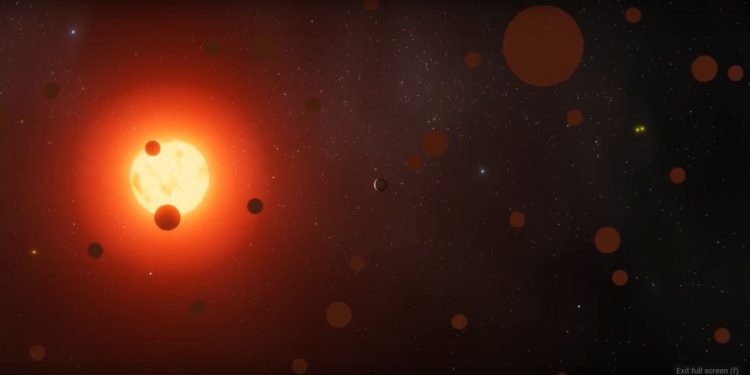Earlier this year, NASA selected an exciting new project for Phase I development under the NASA Innovative Advanced Concepts (NIAC) program, called “Swarming Proxima Centauri.” This project, a collaboration between Space Initiatives Inc. and the Initiative for Interstellar Studies (i4is), is led by Space Initiatives’ chief scientist, Marshall Eubanks. Its bold vision is to use a swarm of tiny spacecraft to explore Proxima Centauri, our nearest neighboring star system.
As explained by Universe Today, the mission’s concept is similar to other innovative ideas involving gram-scale spacecraft powered by laser arrays, such as Breakthrough Starshot. The aim is to accelerate these small craft to 20% of the speed of light, reaching the Proxima Centauri system in a fraction of the time it would take conventional spacecraft. During the 2024 NIAC Symposium, Eubanks and his team unveiled an intriguing animation showcasing their vision for this mission. The video illustrates the spacecraft, called “Coracles,” and how they might help unravel the mysteries surrounding Proxima b, a rocky planet in the star’s habitable zone.
The Vision Behind the Mission
The Proxima Centauri mission has been evolving since its inception in 2017, when i4is first proposed Project Lyra, a plan to catch up with the interstellar object ‘Oumuamua. Since then, the project has expanded, bringing in Space Initiatives Inc., a company dedicated to developing “femtospacecraft”—miniature spacecraft even smaller than nanospacecraft. Now, the team is focused on a swarm of “picospacecraft,” which would travel to Proxima Centauri and gather crucial data. Their design is simple yet robust: solid, armored on one side, and fitted with reflective material on the other to propel the tiny crafts using a powerful 100-gigawatt laser array.
Each Coracle probe is about four meters wide and weighs only a few grams. Their lightweight structure makes it possible to achieve unprecedented speeds, allowing the mission to reach Proxima Centauri in just a couple of decades. These spacecraft would be equipped with lasers for inter-probe communication and data transmission back to Earth.
Challenges and Breakthroughs in Interstellar Exploration
The mission is not without its challenges. One of the key difficulties lies in ensuring the swarm of spacecraft operates coherently. Eubanks stressed the importance of operational coherence, where all probes act as a unified system, even though photonic phase coherence won’t be possible. The team plans to overcome this with precise clocks and laser range measurements, ensuring that each probe knows its exact position within the swarm. This coherence will be vital when collecting data and sending it back to Earth in what the team calls the “wall of light”—a simultaneous transmission of photons from all probes. With this method, the researchers estimate they can transmit around four gigabytes of data per year, a significant amount considering the distances involved.
Though the project did not secure Phase II or III NIAC funding, it remains a groundbreaking initiative that hints at the future of interstellar exploration. Proposals like these demonstrate that exploring our neighboring star systems is no longer just a dream. In fact, it’s becoming an increasingly realistic goal thanks to technological advances like laser-propelled spacecraft.
Looking Forward: What’s Next for Interstellar Exploration?
As this mission concept evolves, it raises important questions about the future of space exploration. What other technological advances will help push humanity closer to the stars? Projects like Swarming Proxima Centauri signal that we are approaching a pivotal moment in human history. Soon, we may be able to send spacecraft beyond our solar system to gather information about distant planets, potentially revolutionizing our understanding of the universe.
In the coming years, we can expect more ambitious proposals like this to emerge, each pushing the boundaries of what’s possible. As technology continues to advance, the dream of exploring the stars may finally be within our grasp. So, what do you think—will we reach Proxima Centauri in our lifetime?
The prospect is thrilling and offers a glimpse into a future where humanity is no longer confined to our solar system. This is the kind of bold, innovative thinking that drives scientific progress and, ultimately, brings us closer to answering the biggest questions about our place in the universe.











